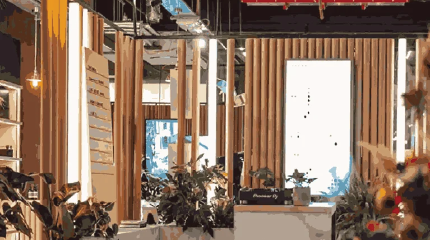In our latest blog, Luci Beaufort-Dysart, Director of Hyphen puts forward the case for hyper-local experiential marketing.
Is hyper-local experiential the marketing of the future?
We are now over 6 months into our ‘new (not so) normal’ world and so much has changed, seemingly overnight.
Adaptation is the secret to survival and success in times of great change and disruption.
In the world of marketing, one trend we are seeing develop and proving its worth, is that of “hyper-local” marketing. So what do we mean by this? From a Hyphen perspective, we use this term to refer to targeting prospective customers in a highly specific, geographical area.
We have worked this way with one of our clients for quite a while now (since pre- COVID 19). This was historically driven by availability of one of their products (which has only been available to specific postcodes in a number of towns and cities due to the infrastructure required to enable the product). We have previously seen good results working in this way, but more recently these have been even better.
So what is this down to? And why do we believe this could be the perfect model for brands looking to embrace experiential marketing in a COVID (and hopefully in time, post-COVID) world?
Here are our five reasons why your brand should consider hyper-local marketing, now and in the future:
1. Accessibility
Traditionally speaking, footfall has been king. The bigger brands have typically tended to target larger shopping centres/train stations with large footfall, as quite understandably, they want their experience to be seen and engaged with by as many people as possible.
However, in this current climate, people are staying and shopping local. So, it is proving really effective to take the brand to the people, giving them the chance to engage with the brand on their home turf.
This also gives brands the opportunity to demonstrate that they care about their customers and are investing in visiting them in their local communities.
2. Targeting
Working at a hyper-local level is also really effective if you are targeting a specific demographic or geography.
When this specific targeting is required, we work with our in-house insights partner Axis, to match the target audience to specific locations within the UK using various data sources, to ensure we are in the right place, at the right time.
This approach is particularly important if your product is only available to buy in specific locations, minimising contact with those just passing through an area and maximising genuine sales opportunities.
3. Engagement
As we meet with people, closer to their homes, we have found engagement levels increase.
When people’s shopping experience is less of an “occasion”, overall they seem more happy to be stopped whilst going about their day-to-day business, rather than if they were on a ‘shopping trip’ or during their commute etc.
There are a number of reasons for this, the most evident being time and trust.
With the current restrictions in the place, this has for many, freed up their dispensable time. And when people are in their own neighbourhoods, they feel more at ease, so are more likely to trust and engage with brands that are seen to behave in a safe and approachable manner.
4. Competition
Building on the earlier point around accessibility, by activating on a more hyper-local level there is simply less competition and less marketing noise to cut through.
This is good for brands but more importantly, it’s good for customers. During times of great uncertainty, brands needs to be extremely sensitive about how they engage with people.
This helps build customer trust but it also ensures people don’t feel hassled or sold to at every corner on their shopping journey. Hyper-local will only work if brands are hyper-sensitive to peoples’ needs and wants too.
5. Cost
Finally, there are also many efficiencies and savings that can be made from marketing at a hyper-local level.
These locations tend to have a much lower site fee, due to, in the main part, the reduced footfall.
But footfall is not everything. In fact, the case for quality over quantity is strong when, with the right insight and data, you can target the right people.
So, to summarise, do we at Hyphen believe hyper-local experiential marketing is the future?
Well, as with all marketing, the first aspect to understand fully is a brand’s overall objectives. If their objectives are more focused on eyeballs and driving user- generated content, then a more traditional or hybrid location approach would be recommended.
But if a brand is looking to target certain demographics, is looking to build trust and loyalty with customers by investing in communities and supporting local economies, then we believe the case for hyper-local experiential is strong. And the results we’ve seen support this approach.
To find out more about our COVID-friendly approach to experiential or to discuss a location strategy for your next campaign, drop us a note to
Do get in touch if you’d like us to help!




